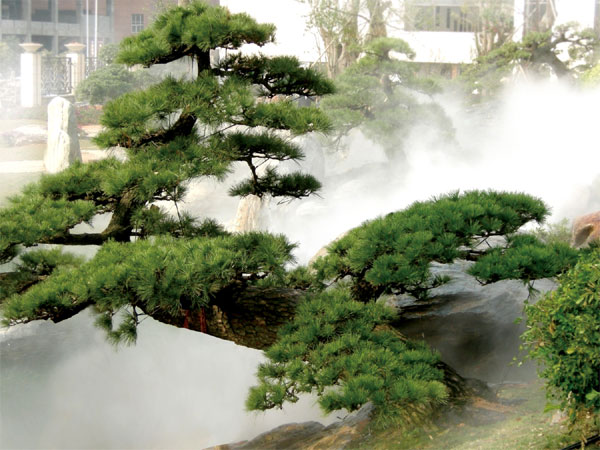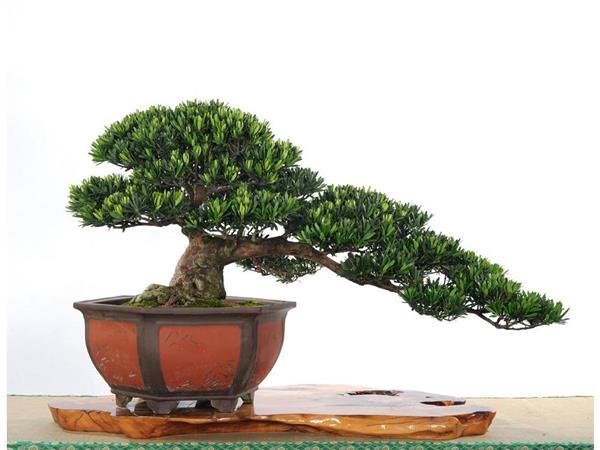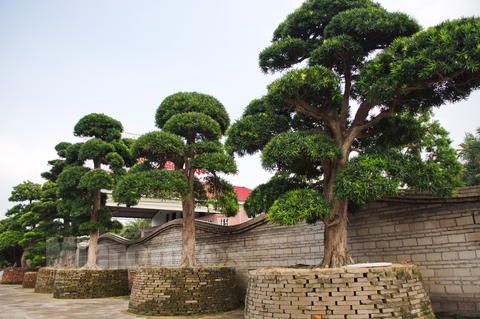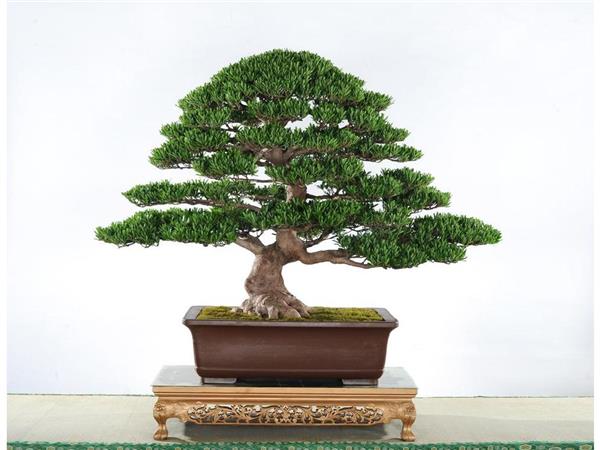Propagation methods of seeds of Pinus elliottii
We probably all know what the breeding method of Luohansong is like, but do you know the propagation method of Luohansong seed? The following editor will share with you from several different aspects what is the method of seed reproduction of Luohan pine.

Culture methods of seeds of Pinus elliottii
The pot shape of Luohansong has qu dry type, oblique dry type, horizontal dry type, cliff type and root type, etc., branches and leaves can be made into cloud sheet type or steamed bread type, the posture is lush and elegant, ancient and vigorous, the leaf color is fresh and green in four seasons, and there is a sense of vitality and elegance. If you combine Luohansong with rocks, bamboos and stones, it will be elegant and wild, properly maintained, and even evergreen for decades or even a hundred years. Soil for basin selection: purple sand pottery basin or glazed pottery basin is commonly used in Luohan pine bonsai, and the shape of the basin depends on the shape of the tree. for example, cliff type can use high-depth thousand-cylinder basin, oblique dry type, horizontal dry type with medium-deep square basin or oval basin, root-lifting type and stone-attached type with shallow basin bowl. The best choice of basin soil is fertile and moist, loose texture, good drainage, slightly acidic sandy loam, when moving the basin, you can sprinkle a layer of coarse sand at the bottom of the basin, which is conducive to water permeability. Watering and fertilization: Luohansong likes a warm and humid environment and is afraid of waterlogging and bright light. It should be watered frequently during its growing period, but do not form stagnant water. To the summer to put Luohansong in the semi-shade to maintain, but also often spray water on the leaf surface, will make the leaf color more bright green. The formed Luohan pine bonsai should not be fertilized more, once every two months, 1-2 times in spring, stop fertilization in autumn in order to avoid sprouting autumn buds, pay attention to cold prevention and reduce watering in winter potted plants. Pest control: Luohan pine is mainly harmed by leaf spot and anthracnose. 0.5% 1% Bordeaux solution can be used and sprayed once every 10 days for 3 consecutive times a month before the plum rain season. Insect pests are harmful to shell insects, red spiders and large coir moths, which can be sprayed with 1200-1500 times of dichlorvos or 1500 times of dimethoate. To cultivate Luohan pine, you can prune it all the year round, mainly cutting off long branches and diseased branches to maintain a beautiful tree shape. During the flowering period of Luohan pine from April to May, it is best to pick the buds so as not to consume nutrients and affect the growth of pots.

Propagation methods of seeds of Pinus elliottii
The propagation of Pinus elliottii is mainly carried out by the method of cuttage, which is mainly divided into twigs and hardwood cuttings. Different insertion methods adapt to different periods, and the methods are also different. In order to adapt to the propagation of Siraitia grosvenorii, we should carry out the corresponding operation according to the way of cutting, so as to ensure the survival rate of seedlings.
The shoot cuttings were carried out from mid-late May to early July in the first half of the year and from mid-late August to late September in the second half of the year. Seedlings planted in the first half of the year should pay attention to prevent high temperature burns and diseases. Seedlings planted in the second half of the year should pay attention to the middle and later stage of heat preservation and anti-freezing, the time to uncover the shade net is in late November, and the time to uncover the shade net in dry years can be extended to late December.

The hard branches are cut. Hard branch cuttings refer to the method of cutting sturdy branches completely lignified in the previous year during the dormant stage from February to March in early spring when the sap has not yet flowed. This method is mainly suitable for deciduous trees such as crape myrtle, hibiscus, grape, poplar, willow, etc., and a few evergreen trees can also be cut with hard branches, such as oleander. What should be paid attention to in the early spring is to increase the soil temperature and control the air temperature in the shed.
In short, whether it is the cuttings or hardwood cuttings, we should disinfect the cuttings and the soil, and at the same time regulate the temperature, humidity and light of the seedbed. In addition, in order to improve the survival rate of seedlings, some measures should be taken to promote rooting.

After the insertion is over, the nursery bed should be checked and nursed frequently to see if the film and shade net covered by the seedbed are bitten by insects and rats and blown open by the wind. Uncover the film and shade net every 15 days or so, spray pesticides to kill bacteria and insects, and then cover the film and shade net again. If the seedbed soil is found to be dry, sprinkle some water before spraying, and then spray pesticides after the foliar water dries. Generally uncover the film spray 2 to 3 times, the cuttings have taken root and survived, and then can be given medicine every 1 to 2 months. After the cuttings survive, you can consider uncovering the film. Before officially uncovering the film, you should choose a cloudy and rainy day, first uncover the film at one or both ends of the seedbed for several days, and then remove all the film. The shade net should still be covered after uncovering the film. The seedlings planted in the first half of the year, the shade net can not be removed until late autumn, because the young seedlings can not stand strong light exposure. In particular, it is worth mentioning that Ligustrum lucidum and Ligustrum lucidum are susceptible seedlings, and the film should be uncovered in time. Generally, about 90% of the seedlings can take root 20 days after insertion. After removing the film, you should immediately spray fungicide to prevent disease, spray once in 7 to 10 days, and spray 3 to 4 times in a row.
So much for sharing with you about the seeds of Luohansong. I hope the above content can help us to better understand this issue. Please look forward to more wonderful content.
Before officially uncovering the film, you should choose a cloudy and rainy day, first uncover the film at one or both ends of the seedbed for several days, and then remove all the film. The shade net should still be covered after uncovering the film. The seedlings planted in the first half of the year, the shade net can not be removed until late autumn, because the young seedlings can not stand strong light exposure. In particular, it is worth mentioning that Ligustrum lucidum and Ligustrum lucidum are susceptible seedlings, and the film should be uncovered in time. Generally, about 90% of the seedlings can take root 20 days after insertion. After removing the film, you should immediately spray fungicide to prevent disease, spray once in 7 to 10 days, and spray 3 to 4 times in a row.
So much for sharing with you about the seeds of Luohansong. I hope the above content can help us to better understand this issue. Please look forward to more wonderful content.
Related
- Wuhan Hospital Iron Tree Blooming Result Was Instantly Frightened by the Gardener Master
- Which variety of camellia is the most fragrant and best? Which one do you like best?
- What is the small blue coat, the breeding methods and matters needing attention of the succulent plant
- Dormancy time and maintenance management of succulent plants during dormancy
- Minas succulent how to raise, Minas succulent plant pictures
- What are the varieties of winter succulent plants
- How to raise succulent plants in twelve rolls? let's take a look at some experience of breeding twelve rolls.
- Attention should be paid to water control for succulent plants during dormant period (winter and summer)
- Watering experience of twelve rolls of succulent plants
- Techniques for fertilizing succulent plants. An article will let you know how to fertilize succulent plants.



